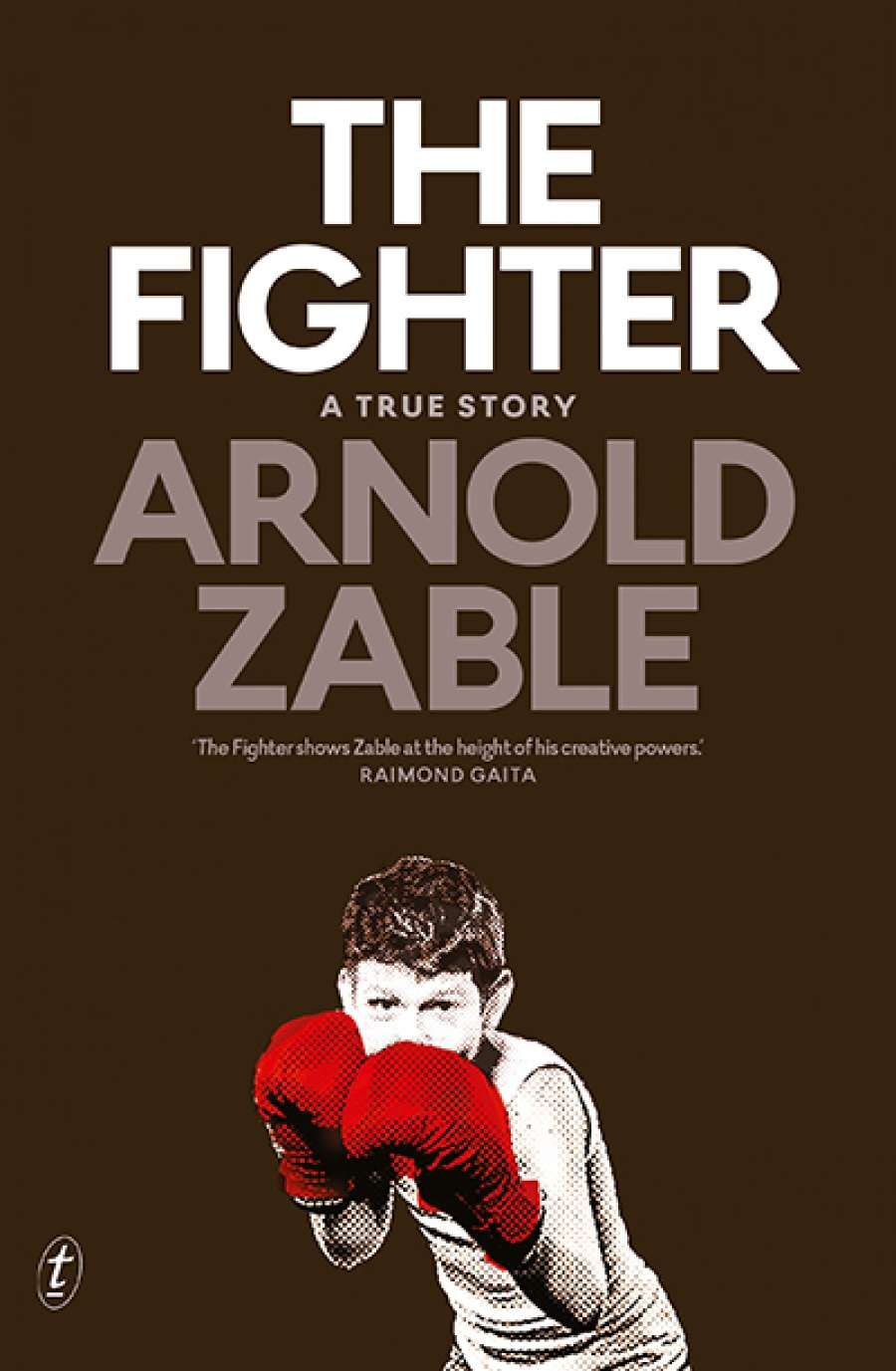
- Free Article: No
- Contents Category: Biography
- Custom Article Title: Michael McGirr reviews 'The Fighter' by Arnold Zable
- Custom Highlight Text:
Arnold Zable may be unafraid of pain, but he is no masochist. Masochism wants to control pain: Zable is much more of a liberator. Since the publication of his first book ...
- Book 1 Title: The Fighter
- Book 1 Biblio: Text Publishing $27.99 pb, 200 pp, 9781925355062
Zable's new book, The Fighter, shares all the instincts of this type of story-telling. It is the tale of a boxer, Henry Nissen, originally Henry Nissenbaum, who achieved a considerable level of success in the ring but who hardly became a household name. Zable painstakingly evokes not just Nissen but his entire culture, that of the inner suburbs of Melbourne, especially Carlton, in the years after World War II. Zable has been in this neck of the woods before. It is the world of his parents and the one in which he grew up. But The Fighter is also a book about present-day Melbourne, and it tells stories about a scarcely visible class.
Henry and his identical twin brother, Leon, were born in the chaos of Europe in 1948. Nissen still works on the docks. In his spare time, he helps troubled people, especially the young. His appearances in court to provide character evidence are so frequent that magistrates regard him as part of the furniture. He drives an unglamorous yellow Hyundai and eats at the Port Diner, a 'low-slung aluminium prefab that sells basic fare' in the shadows of the pylons of a major freeway – the kind of place some people might think still exists only in movies. Nissen is an unlikely hero, and Zable recreates his world with the utmost respect.
Nissen comes from a subculture formerly known as 'blue collar'. Zable underlines how this traditional world rests partly on the bedrock of refugee experience. Like Nissen, Zable was the son of refugees. Indeed, there is more than one 'fighter' in this book. No less significant than Henry is his mother, Sonia, who was born in a village in south-west Ukraine. Her survival is a mystery: 'Contending armies crisscrossed the empire. Prisoners worked as slaves in remote labour camps. Within this immense space, and in these tumultuous times, Sonia cannot be seen.' She married Simche in the Bergen-Belsen Displaced Persons Camp, in the shadows of one of the death camps. In that camp in 1946, there were 1,000 births and 1,400 marriages. By 1948 the couple was in Australia and was soon caring for a growing family. Along the way, Sonia had been the victim of sexual assault, a tragedy that resonated throughout her life. She subsequently contended with fragile mental health and hospitalisation. Her story is as much at the heart of this book as Henry's. Writing about another survivor, the writer Jacob Rosenberg, Zable has described his 'long nights of doing battle with his demons'. Sonia, like many others, shared this experience.
 Arnold Zable (photograph by Griff Clemens)Zable is a presence in The Fighter, a bit like one of Dostoyevsky's narrators, a witness who deflects personal attention. Zable eats with Nissen at the diner, accompanies him to the seamen's mission, observes Nissen in half a dozen distinct social situations, joins the crowd at fights, and struggles to keep up with the yellow Hyundai in traffic when Nissen is responding to a call for help. There is a quest here. Zable is intrigued by the interest of Nissen, 'a seeker rather than a believer', in different types of spirituality. The reader never gets the impression that he has taken proprietorship of Nissen's story. The Fighter is an open-ended kind of book, a celebration more than a closed biography.
Arnold Zable (photograph by Griff Clemens)Zable is a presence in The Fighter, a bit like one of Dostoyevsky's narrators, a witness who deflects personal attention. Zable eats with Nissen at the diner, accompanies him to the seamen's mission, observes Nissen in half a dozen distinct social situations, joins the crowd at fights, and struggles to keep up with the yellow Hyundai in traffic when Nissen is responding to a call for help. There is a quest here. Zable is intrigued by the interest of Nissen, 'a seeker rather than a believer', in different types of spirituality. The reader never gets the impression that he has taken proprietorship of Nissen's story. The Fighter is an open-ended kind of book, a celebration more than a closed biography.
Towards the end of Jewels and Ashes, Zable writes of his parents in their autumnal years. He remembers his father describing autumn as 'the philosopher':
He had been born in winter: ethereal, snow-veiled, but forbidding and threatening. His basic pessimism had been tempered by spring's naïve and buoyant innocence. The summers had, he admits, been satisfying, at times even joyful. But the heat could also bloat the mind and dull the senses. Autumn ... a softer melody. A potential harmony. A song of fruition. A thanksgiving.
The Fighter is an autumnal book, with leaves of many colours and limbs heavy with fruit. It offers a rich sense of the ways in which pain can mellow and create community.


Comments powered by CComment